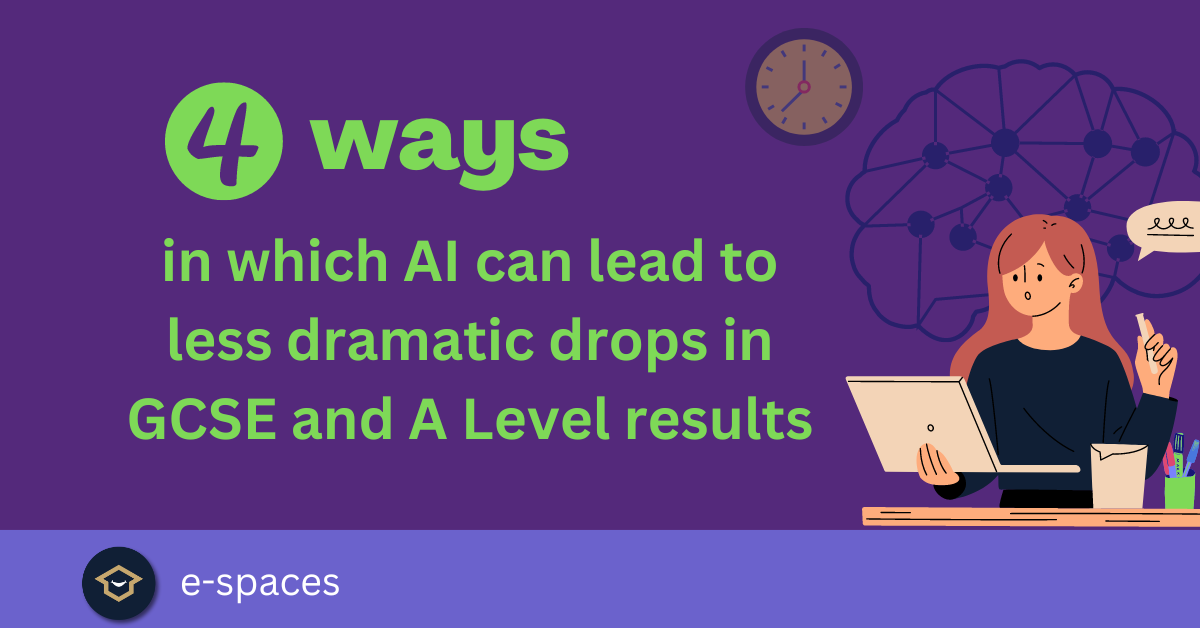Imagine a world where students and teachers can be confident in the work they have put in throughout the year, and the results are an easy and accessible way to gauge the maximum effort put into their success.
GCSE and A-Level results contrasted significantly in 2022 compared to the previous two years, which saw teacher-assessed grades (TAGS) in place of exam-based results. Official figures show that comprehensive schools suffered a 2.7% decline in the proportion of GCSEs being graded 7-9 (the highest grades), while among private schools, the decline was almost three times steeper – an 8.2% drop.
This raises a question about the processes involved in assessing students throughout the year and how they can be improved.

Why is there a need for more accurate and consistent assessments?
The truth, according to a University College of London (UCL) study, is that just under half (48%) of students who struggled in their English Language and Maths GCSEs were already judged to be falling behind when they were as young as 5 years old when they took the Early Years Foundation Stage profile assessments. Of those below expected levels, 27% failed to achieve a grade 4 or above in either subject, two fundamental areas that help students prosper after school.
There needs to be more standardized action on how students are assessed, not just at the end of each year but as each lesson begins and progresses. What if there was a way to evaluate a child’s engagement and progress in every lesson that can be looked back on and monitored? Digital daily personalized assessments that teachers and students have access to will help identify problems earlier, allowing action plans to be drawn up more effectively.
What has caused discrepancies in GCSE results?
GCSE results this year proved very telling in how we assess the educational outcomes of students. COVID caused chaos with how students and lessons are taught and assessed, as there were not many systems in place to help the adaptation to online platforms. Students falling behind in subject areas were less likely to get picked up and given more targeted learning to help them.
A study by the Tony Blair Institute for Global Change recommends that the education system be reformed to reflect work environments increasingly shaped by technology and artificial intelligence (AI).
Blair wrote: “We have analog learning for a digital age: a paper-based system that revolves around snapshot judgments instead of assessing whether schools are preparing young people for the future they face. In the meantime, some of the world’s top performers are forging ahead.”
So how can technology in schools help ensure fewer students are falling through the cracks in a now outdated system?
Four ways AI can help
1. Predictive Analytics
Improving understanding of where each student is thriving and, more importantly, where they are struggling is key to unlocking more effective, tailored action plans to encourage students to tackle their knowledge gaps head-on, increasing confidence.
2. Pre-planned lessons
One of the critical problems teachers face (and one of the core reasons why many leave the profession) is the workload. Resourcing and lesson planning is one of the key reasons why teachers feel overwhelmed, so having handy pre-planned lessons or robust tools at their fingertips that assist them with their planning, will free time up to help students in a more targeted way.
3. Automating Administrative tasks
Teachers don’t just teach – many evenings are spent marking homework and doing other unnecessary admin tasks. A happier teacher usually means happier students, so having the tools to reduce the required time for marking 30 separate bits of homework per class most days will increase job satisfaction.
4. In-lesson assessments
Creating the space for students to answer questions using technology allows both the child and the teachers to receive real-time feedback, allowing for more focused and personalized learning quicker that can be adapted to each student, leading to earlier interventions.
There is expected to be a further decline next year, as this year’s exams were adapted to help students by being told in advance which topics they’ll be assessed on. After years of inaction, E-spaces have a solution to help revolutionize and create a more digital classroom that promotes early intervention while measuring and predicting future grades.
It’s time to help teachers focus more on what they love to do, giving students every chance to reach their full potential and setting them up for a bright future.










